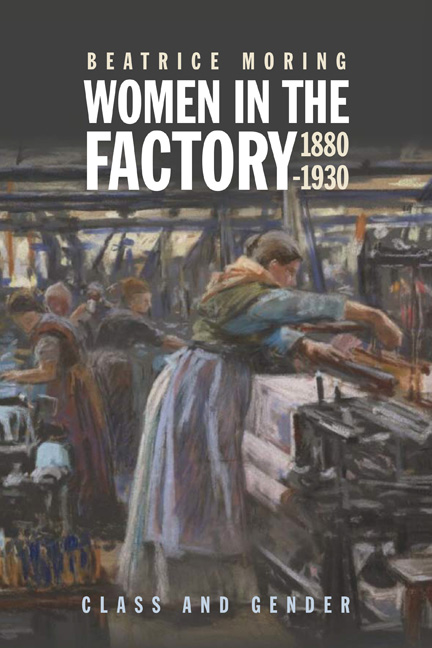Book contents
- Frontmatter
- Contents
- List of Illustrations
- Introduction – Why Women in the Factory?
- 1 Gender And Class – Male Unions, Political Movements and the Female Vote
- 2 Women in Industry: Work, Sectors, Age and Marital Status
- 3 Women, Earnings and the Household – Why the Factory?
- 4 Accidents, Compensation, Laws and Inspection
- 5 Middle Class Girls, Education and Entry into the Civil Service
- 6 The Female Factory Inspectors – How, Why and Who
- 7 Factory Inspection Activity
- 8 Class, Gender and Communication
- Conclusion
- Appendix 1 The Right for Women to Vote in National Elections
- Appendix 2 Women in the Workforce
- Appendix 3 Women, Work, Earnings and Family
- Appendix 4 Accidents, Workplace Acts and Regulations
- Appendix 5 Education
- Appendix 6 Female Inspectors
- Appendix 7 Inspectors, Activity
- Appendix 8 The Female Inspectors and Society
- Bibliography
- Index
8 - Class, Gender and Communication
Published online by Cambridge University Press: 09 May 2024
- Frontmatter
- Contents
- List of Illustrations
- Introduction – Why Women in the Factory?
- 1 Gender And Class – Male Unions, Political Movements and the Female Vote
- 2 Women in Industry: Work, Sectors, Age and Marital Status
- 3 Women, Earnings and the Household – Why the Factory?
- 4 Accidents, Compensation, Laws and Inspection
- 5 Middle Class Girls, Education and Entry into the Civil Service
- 6 The Female Factory Inspectors – How, Why and Who
- 7 Factory Inspection Activity
- 8 Class, Gender and Communication
- Conclusion
- Appendix 1 The Right for Women to Vote in National Elections
- Appendix 2 Women in the Workforce
- Appendix 3 Women, Work, Earnings and Family
- Appendix 4 Accidents, Workplace Acts and Regulations
- Appendix 5 Education
- Appendix 6 Female Inspectors
- Appendix 7 Inspectors, Activity
- Appendix 8 The Female Inspectors and Society
- Bibliography
- Index
Summary
Nondescript combatant against, drink, poverty, factory owners and the medical profession
Trust and mistrust
Complaints received, complaints resolved
Although there had been activity among working women and female unions to achieve the employment of female inspectors, there was not an immediate coming together when the female inspectors commenced their work. There were even instances when the women sided with employers, regarding the inspectors as their enemies. During the early years, in 1896, there was even an example of a woman in Leeds (Annie Michell) taking Adelaide Anderson to court for physical assault, claiming that the Inspector had grabbed and shaken her when she did not answer questions. The outcome was in favour of the Inspector, as the court could clearly see that the small and timid Inspector was unlikely to form a physical threat to a woman the size of her accuser. The case brought bad publicity, however. Adelaide Anderson assessed the situation in the early years as one where the women had become so used to being ignored and misused that they had slid into lethargy, expecting no improvement. Her view was that only through activity and publicising that activity could the inspectors convince the female workers that the situation could change.
As conversations regarding problems were unlikely in the presence of the employer or the foreman, confidential visits in women's homes would create better chances of communication.
It would seem that Anderson was right. When the newspapers reported on prosecutions, as the appearance of the ‘Lady Inspectors’ in court was a novelty, the notion that change was possible did penetrate the awareness of at least some women. There was an increase in the number of complaints by female workers, or their families, received by the female inspectors, doubling in 1896 (to 381) in comparison with the previous year. With an increasing number of complaints also came an increasing number of prosecutions.
The creation of posts fixed to a specific locality cut down on time used for travel and increased the opportunities of contact with the women in the workplaces and outside. In 1913, the women's branch of the inspectorate visited nearly 7000 factories and 4000 workshops, investigated 700 accidents, conducted 373 prosecutions and received 2014 complaints.
- Type
- Chapter
- Information
- Women in the Factory, 1880-1930Class and Gender, pp. 209 - 225Publisher: Boydell & BrewerPrint publication year: 2024



